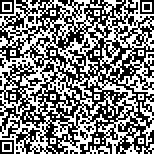下载中心
优秀审稿专家
优秀论文
相关链接
摘要

本文应用20年(1981—2000年)的卫星数据反演归一化差值植被指数(NDVI),同时获取地面格网的温度与降雨数据,并分析这些数据之间的关系。基于地面的温度和降雨格网数据将研究区划分为8个气候区域,再利用NDVI数据把降雨量最少的3个气候区——区1,2,3各划分为10个等级。此外,分析这3个气候区在1983—1998年15年间的NDVI变化状况,结果显示出研究区荒漠化状况的加剧。
NormalizedDifferenceVegetation Index (NDVI) from satellite data and groundmesh (cell) data(10km×10km) for temperature and precipitation over20years(1981—2000) were used to investigate the relationships among NDVI, temperature, and precipitation. In addition, the study area was divided into eight climate zones based on the groundmesh data for temperature and precipitation. The zoneswith little precipitation-Zone1,2, and3-were catego-rized into10classes using NDVI data. Moreover, NDVI change for each class ofZone1,2,and3during15years 1983—1998) was analyzed. The results indicate the aggravation ofdesertification.

